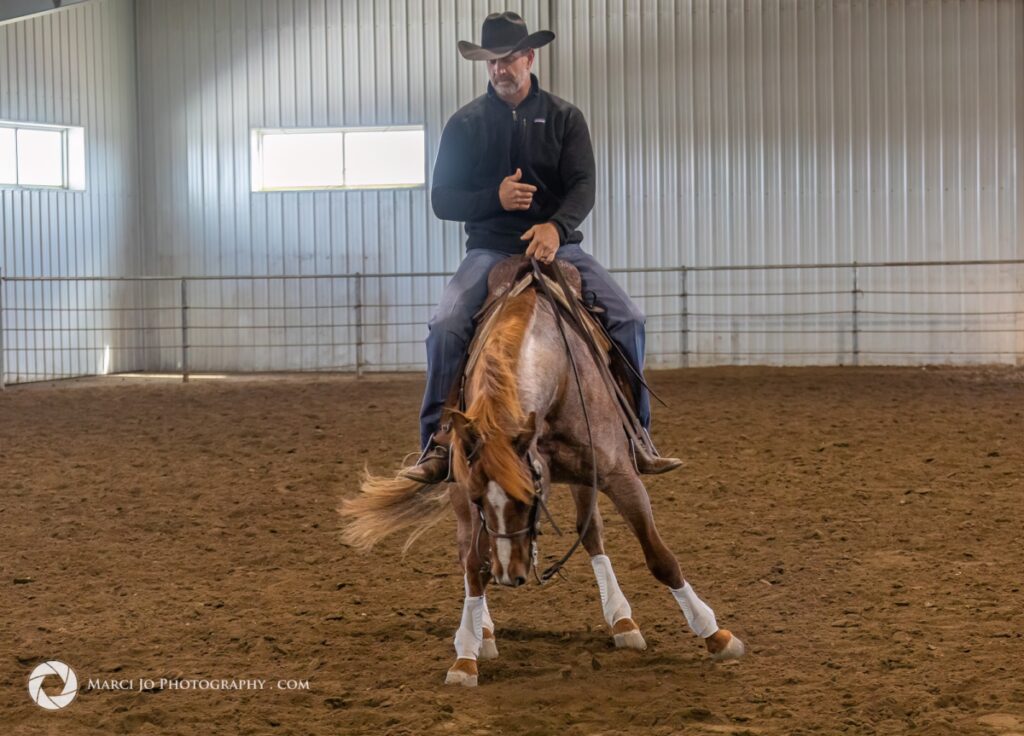ADS

Lyons and Boon. [Marci Jo Photography]
“Training a horse takes time,” said Lyons. “A thought on a horse will eventually become an action, and my job as the rider has to be interesting, so it’s important enough for the horse to mean something during the training process.”
Lyons described the confidence and trust that is earned and built through every ride. “Horses will eventually trust you, with a lot of consistency, then all of a sudden a relationship is built with the horse, and the horse knows it’s for his best interest,” explained Lyons.
As mentioned in Part 1 of this series with Lyons, horse training is simple — conveying your thoughts and making it the horse’s idea. How much pressure in the ‘ask’, the horse decides. Horse training is straightforward. However, it is undoubtably a lifelong skill that is continually worked on by top trainers across the world.
Going back to the foundation being the most important part of every horse Lyons trains and Guide being the first step in Lyon’s 5 step method, here is a brief explanation of Part 2 – The Give.
“From the first step of guide, we can now start working with the head. Once we have consistency with the horse’s speed, where he isn’t rushing or taking off and staying to the right or the direction we are asking the horse to stay in,” explained Lyons. “Again, if I take the resistance out of his body, and he is guiding (like demonstrated in Part 1 – Horsemanship with Lyons), then I have ten percent resistance left, because I have already taken 90 percent out of his body. People think the argument always shows up with the mouth or starts with the mouth. It has nothing to do with the mouth; it’s from the body.”
The next thing Lyons will ask for is The Give. “Now the give is simple. The give is when I pick up on the reins. The moment I see that horse’s nose come to me, I let go,” stated Lyons.
Lyons rationalizes that there is timing in the give. “It’s not that I’m holding the give, I’m not going to frame the horse or hold him in frame. I am simply just picking up and seeing if the nose is still there,” demonstrated Lyons. And the instant ‘it’ — being the nose, is there, Lyons lets go of the rein pressure or releases.

Lyons demonstrating the give and softness involved. [Marci Jo Photography]
“Now when I let go, I’m not expecting him to hold it, I’m just asking if he will give it to me. Then I repeat and ask for the nose again, horse says, ‘Yep,’ and I let go,” Lyons reiterated.
“That is the second part of my foundation. Guiding to the right, as the horse is guiding, pick his nose up, give to the bit, let go. Now I’ll do one, maybe two gives a circle. I’m not going to do give, give, give, give, because then I’m trying to say, hold that head or hold that position,” Lyons added.
“All I care about is that I can pick it up and say,’Can you give me your nose?’ If I’m not fighting speed or direction at this point, then the give is really easy. Again all I’m focused on is that nose,” said Lyons.
“A release at this point, doesn’t mean I want the horse to stay there. A give means, ‘Are you responding?’ Can the horse take his nose in and release right back out, because what makes softness is the ability to bring that nose in and say, ‘give’ and let that nose all the way back out and then draw the nose back to me and say, ‘give,’” added Lyons.

Lyons & Boon working on the stop that begins with the give. [Marci Jo Photography]
Lyons reminds all riders that repetition without change causes aggravation. When it comes to working on the give, thoughtful repetition with a response is necessary, and it’s the foundation of guide that makes the give a simpler step.
Stay tuned for Part 3 of Horsemanship with Lyons and ‘frame.’ For more information, visit: www.joshlyons.com or his Facebook page: Josh Lyons/Lyons Legacy.

Tisa Peek is a long-time horse trainer, competitor in barrel racing and team roping, and writer about the equine. Rodeo and horses run deep in her roots. JT Family Equine is where she calls home, south of Bismarck, ND. Tisa, along with her husband, Jon, and boys, Blu and River, train horses and host clinics. Tisa is the host for Dakota Cowboy on BEK TV.
